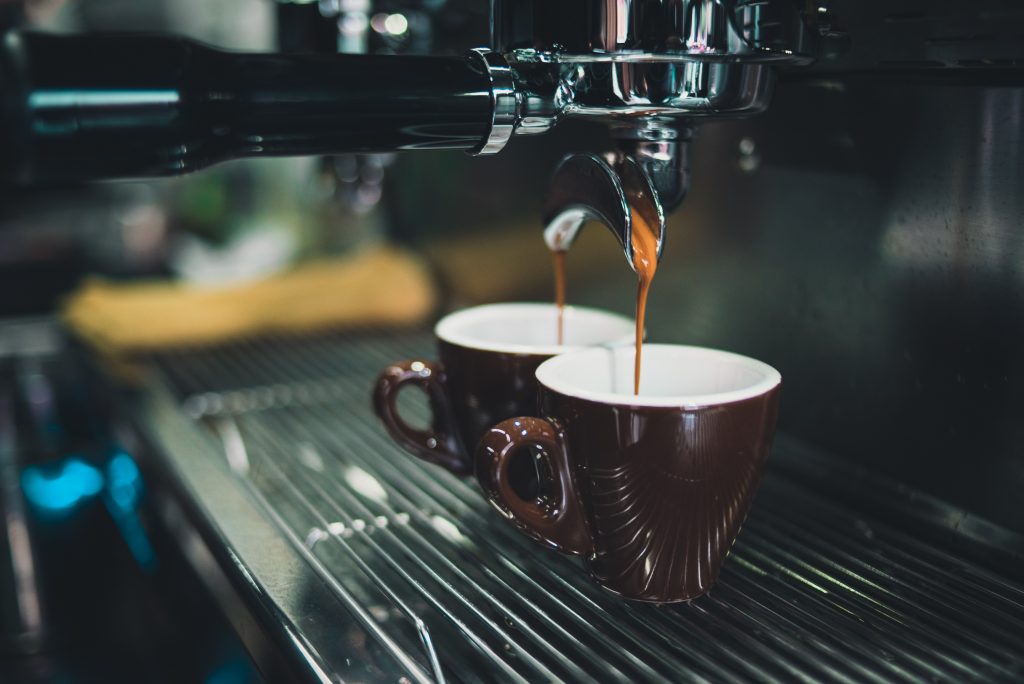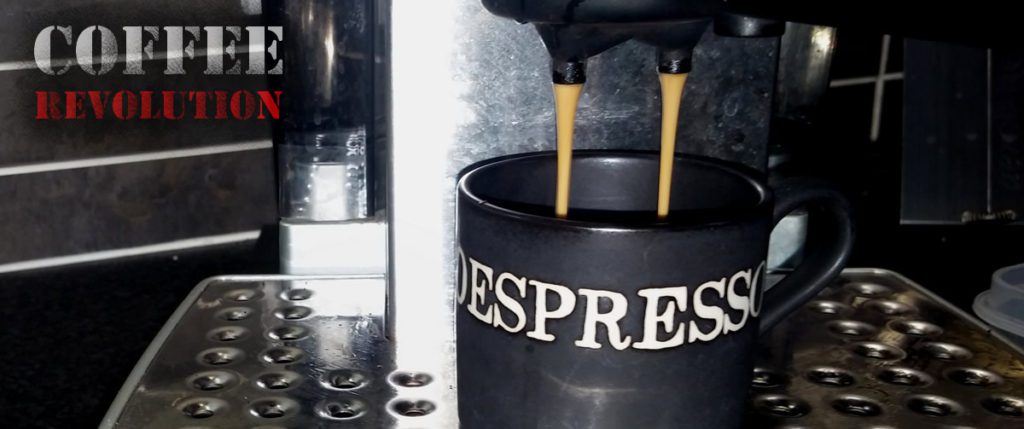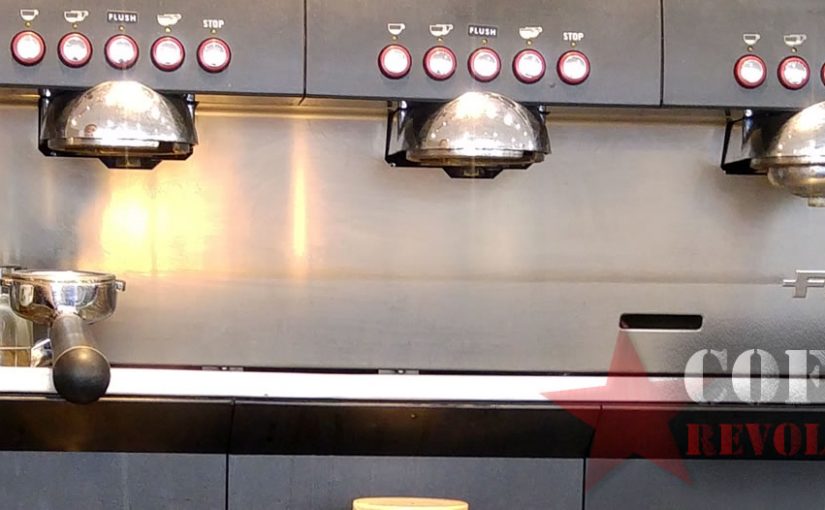When shopping for an espresso machine, among the millions of features advertised is the bar pressure rating of the machine, meaning how much pressure is used to force the water through the coffee grounds in the portafilter.
What you need to avoid is bitter or sour tasting coffee, which we discuss here, but the bar pressure of your espresso maker is an important consideration.
What is this bar pressure thing?
Bars are a measurement of atmospheric pressure, so one bar of pressure is equal to the amount of natural pressure at sea level, meaning 10 bars is 10 times the amount of pressure at sea level.
Why is it important?
If there is not enough pressure the espresso maker will be unable to push water through the ground coffee.
On very fresh beans where the oils are still present and in finely ground coffee it can actually cause a low bar pressure machine to block or only partially extract.
Conversely if the pressure is too high the extraction may be over too quickly or, depending on the type of machine it may even be over extracted.
So how much pressure for an espresso maker?
We will look at how many bars you need for a decent espresso and what this means in terms of coffee.
With the industry standard set at 9 bars, do people really need over 15 bars of pressure to brew high quality espresso?
The short answer is that no, anything over 10 bars won’t really increase the quality of espresso.
Though, machines that are able to push out a higher amount of pressure can, in some cases, help the user brew better espresso than that of a machine only able to push 9 bars.
Beware of makers bar pressure claims
A maker may claim 10 bars of pressure, but this may only be measured on a brand new machine.
Many bar pressure claims denote the maximum pressure before the release valve cuts in, if a machine is overpressurised it will blow internal pipes and seals so you want the machine to tolerate high pressures rather than top out at the maximum the pump can theoretically produce.
As the pumps get older and worn (typically by running it dry) they will produce less pressure, so much like anything you can’t always believe what it says on the box.
The key is always consistency, many machines will start at a high bar pressure and this will drop as the shot pours. The most important thing is flow rate, and this will have a bearing on the quality of your shot.

Problems with low bar pressure machines
We have seen some cheaper low bar machines struggling to push water through finely ground fresh beans. They just lack the power, and you end up with a blocked portafilter, and no coffee.
The blockages also commonly happen when the portafilter is over filled and the coffee expands as water hits it causing a build up of pressure beyond what the pump can handle.
As previously mentioned with fresh beans that are quite soft due to the oils they contain there is a big risk of blocking the portafilter, this is also the case when the coffee is very finely ground.
So if you are buying fresh coffee which tends to compact more solidly you will need a higher bar pressure espresso maker.
This depends on the grind, size of the portafilter and how old the machine is.
It is fair to assume that many machines advertising a higher bar pressure only produce a low amount of bar when the machine is actually in use.
I guess it is much like the speed limits, a Ferrari and 1.0 City car will hit the maximum 70mph happily but the Ferrari arguably does it better and in more style.
So bar pressure denotes the maximum pressure the machine can handle (not produce) but the actual output will typically be nearer 6-9 bars.
Cheaper machines will also deteriorate more quickly and the bar pressure will drop over time as components wear out.

It is more important to be competent with a 9 bar espresso machine than to not use a 15 bar machine properly.
The idea of adding more bars of pressure to espresso machines somewhat hales from the “bigger is better” mentality, tricking consumers into paying more for something that’s not necessarily needed.
So how many bars does your espresso maker need?
For the most part, 7-9 bars of pressure is considered the sweet spot for pump driven espresso machines, which use a pump to force water through the grounds.
Remember that this should be viewed as a real world measured bar pressure through a full portafilter after many cups have been brewed, and may be lower than what is indicated on the manufacturers product claims.
What about steam driven coffee makers?
Pump driven machines, as well as rotary ones, are known to be much better than those that brew using steam, known as steam driven.
An example of a steam driven espresso machine would be the kind sitting on store shelves that seem to cost an unusually low amount when compared to other espresso machines.
These machines use a broiler inside that heats water, and in turn builds steam pressure, which is pushed through the bed of coffee grounds by use of its own force.
This pressure can be quite great, as experienced users of slow cookers can testify to, but the problem is the temperature of this pressurised steam.
With the optimal brewing temperature being 200 degrees Fahrenheit (93.3 degrees Celsius), and the point at which water turns to steam being hotter than that, the resulting coffee will taste burnt and over-extracted.
Steaming milk can also affect extraction.
Steaming milk with these machines can also be a bit of a gamble. Not because the steam wand is lacking power, but because the transition from espresso to steaming milk, or vice versa, can take quite a while.

If you steam the milk first, you may well find your machine is pushing water through the portafilter at a much higher temperature and it takes a while to cool down again.
Quality machines and twin boilers/pump machines are better at transitioning from steaming milk to pulling decent espresso shots at the correct temperature.
Good quality espresso machines
With a pump or rotary driven espresso machine, this is not the case. The water inside is heated with either a broiler, or heat exchanger, to the optimal temperature.
This temperature is maintained throughout the extraction.
Some coffee enthusiasts, pre warm the machine by pulling a test shot first, but it does seem that the first cup never tastes quite as good as subsequent cups.
Once that temperature is reached, it is pumped through with great force with the rotary motor or pump, pulling perfect espresso shots in the process.
Overall, pump espresso machines, as well as rotary ones, are able to brew much better espresso than steam driven ones, and perfect espresso can be brewed with as little as 8 bars of pressure.
What to look for?
Buy a machine that allows you to adjust the pressure and temperature and size of the extraction.
Cheaper machines may only allow temperature and extraction size adjustment which is fine, but the more you have to play with the better your chances of brewing an awesome coffee shot.
These fine tuning controls do make a big difference to the coffee taste, and allow you to experiment.
For those that want a budget or cheaper machine then there are 7-9 bar machines around that still allow a temperature adjustment to be made.
I personally am a big fan of Delonghi, Smeg, Krups, Gaggia and Sage machines, but I’m sure others may be available in your region.
This will prove to be more than adequate for most home coffee situations. My Delonghi produced 20,000 shots over the years I had it without any problems but was finally retired when a rubber seal went and it started leaking.
If you are making lots of coffee, in say a cafe setting, then you really need a professional machine.
A home coffee maker will very quickly burn out, lose pressure or clog up requiring replacement.
Whereas commercial machines often feature two boilers and are designed for heavy use.
They can be easily maintained with a ready supply of parts and service items.
